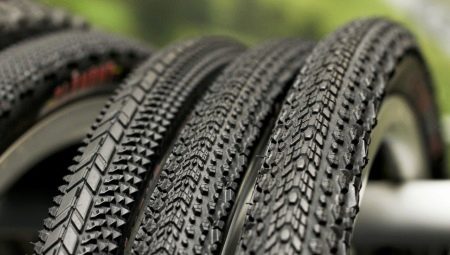The abundance of inscriptions on modern bicycle tires sometimes misleads riders. In addition, all these numbers and letters do not always accurately reflect the actual dimensions of the tire. Different manufacturers use different wheel size systems. So the user needs to know the decoding of the labeling of bicycle tires, so as not to buy a "pig in a poke."
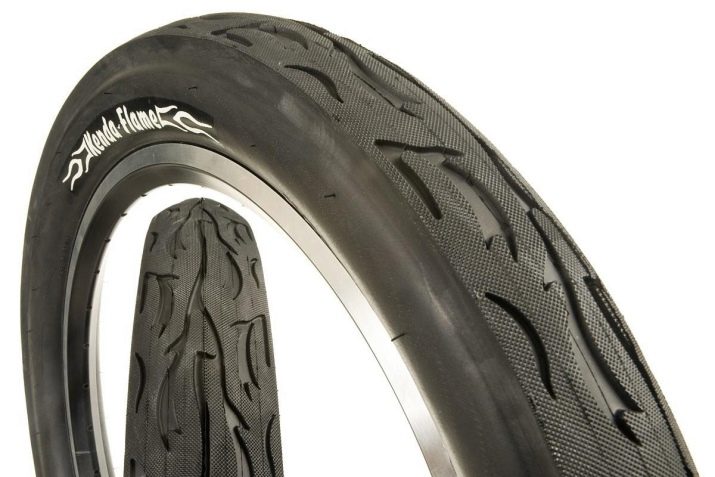
Wheel diameter and width
This is the first thing that comes to mind. However, manufacturers are cunning and indicate approximate wheel sizes. This is especially true for familiar 26 and 28-inch wheels. The fact is that this is the outer diameter of the tire, and the landing size is completely different.

To correct this disgrace was invented ETRTO system (European Tire and Rim Technical Organization, European Technical Organization of Tires and Rims). In this system, only 2 sizes are indicated - tire width and bore diameter. An example of such marking: 37–622. Here the numbers mean that 37 mm is the width of the tire, 622 mm is the inner diameter. To avoid errors, the bore diameter is usually indicated on the wheel rim.
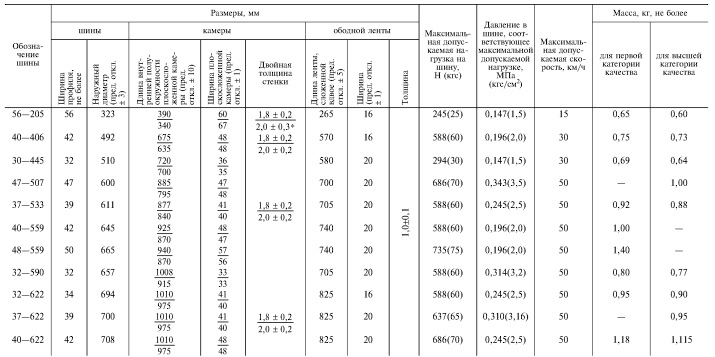
Inch inch characters are also common. For example, a tire with a width of 1.75 and a diameter of 24 inches is designated 24x1.75.
There can be 3 numbers on the tire, for example, 28x1.4x1.75, where 28 is the outer diameter of the tire, 1.4 is the tire height, 1.75 is its width.
In both cases, the landing size is not indicated, and the dimensions are approximate. In addition, the sizes of 1.75 and 1 ¾ inches coincide mathematically, but do not always coincide in reality. Be careful.
To avoid confusion, buy new tires on the model of the old. Also choose models for which the inch designations are duplicated by the ETRTO system markings.
Sometimes used on European tires French notation. Width and outer diameter are indicated by numbers, and landing - by letter. For example, 700x35C. 700 mm - external size, 35 - tire width. The letter C corresponds to a landing diameter of 622 mm. The closer the letter is to the beginning of the alphabet, the smaller the width. On mountain bike tires, this marking is not used.
The Soviet marking system was similar to ETRTO, but the first number denoted the landing size, and the second the tire width. For example: 622-37. In most cases, this is enough. If not, then specialists will help you.
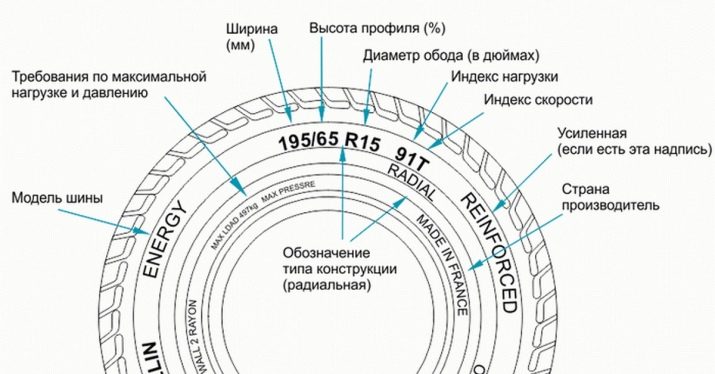
This table will help you fully decipher the sizes of tires.
Rim diameter, mm | External tire size, inches | French marking | Application |
635 | 28x1 ½ | 700V | Road bikes |
630 | 27 | 700V | Highway |
622–630 | 29 | 700C | Road and Niner |
622 | 28x1 5/8 or 1 1/4 | 700-35С or 700-38С | Road |
584 | 27,5 | 650V | Old soviet |
571 | 26x1 ¾ or 1 7/8 | 650C | Small highway |
559 | 26x1 2/3 | 650C | Triathlon Mountain Bikes |
533 | 24x1 ½ | 650A | Teenage mountain |
490 | 24x3 | 550A | Children's road |
The width of the tire should exceed the width of the rim in 1.5-2.5 times. If it is wider, the turns will become more complicated, friction of the brake pads on the tire will appear. If already, it will be more prone to wear and punctures.
Also, different diameters of the wheels are used in different types of bicycles. The most popular inch sizes are shown below:
- 16, 18, 20 - children's and folding bicycles;
- 24 - teenage models;
- 26 - mountain bikes;
- 26, 27, 28 - city, road bikes, miners.
You should not buy a bicycle if the diameter of the wheels differs from these sizes. Otherwise, it will be difficult to find the right tires and cameras.
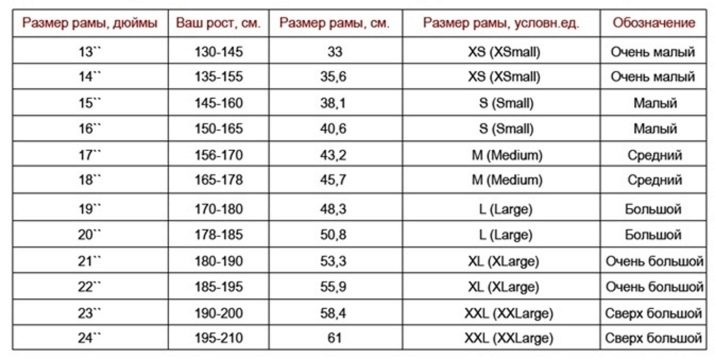
Tread pattern
For different categories of roads there are tread patterns. They come in several forms.
- Slick. Smooth pattern, suitable for road and racing bikes.
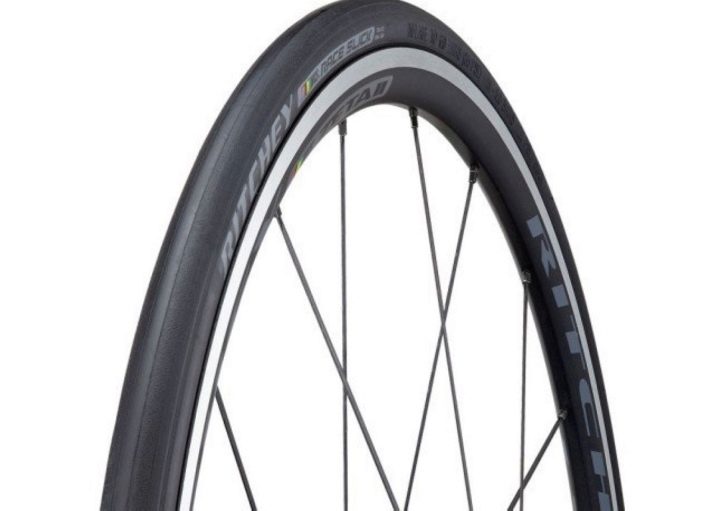
- Half slick. A good ride is combined with normal cross-country ability, it is used on most mountain and city bicycles. The main feature is a smooth treadmill and toothy edges.
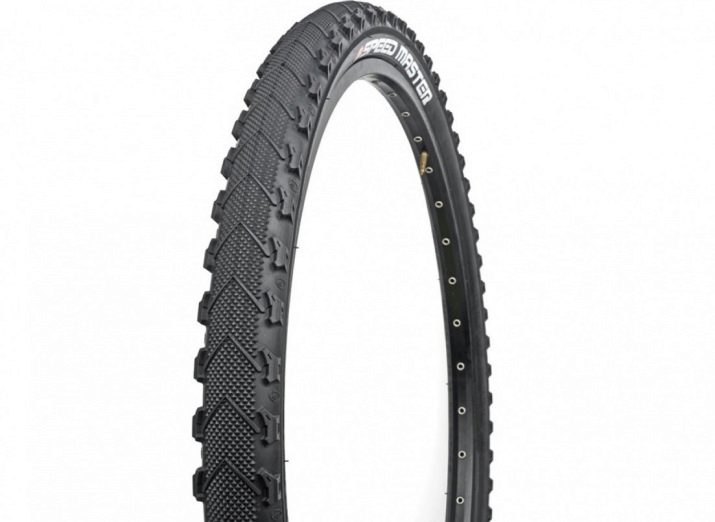
- Mud tread. Aggressive pattern for better grip on complex surfaces and soft soils. It is used on downhill bikes and other off-road vehicles.
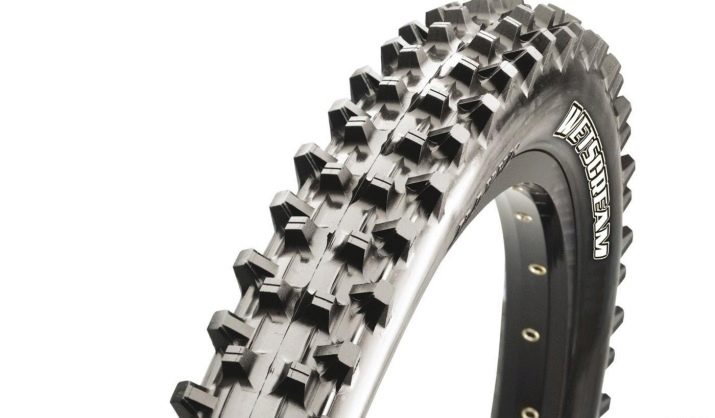
- Winter drawing. "Evil" tread with spikes for riding on snow or a very soft surface. Typically, these tires are placed on fatbikes.
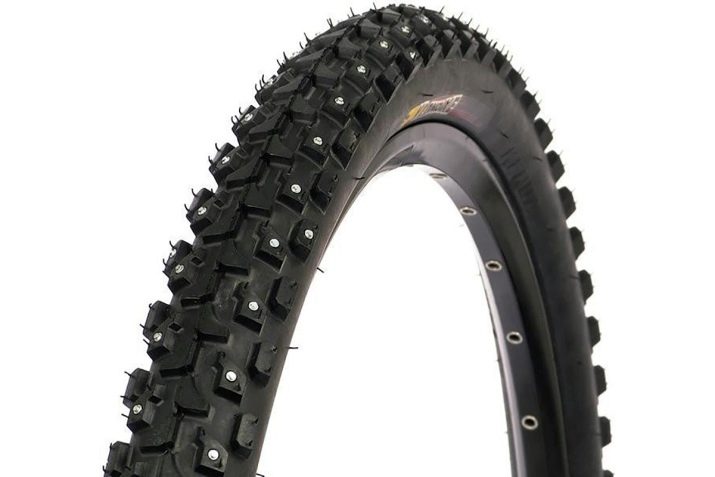
Color marking
In addition to sizes, tires also differ in the composition of the rubber - compound. The softer it is, the better the grip and handling, but the less resource. Its composition is deciphered by a colored strip that runs along the entire tire along the treadmill. A total of 4 colors.
- Red. Hard rubber, it rolls well.
- Blue. Tires of medium hardness, good speed qualities are combined with tenacity.
- Orange. Soft rubber, for unprepared surfaces.
- Purple. Ultra-soft composition for off-road competitions.
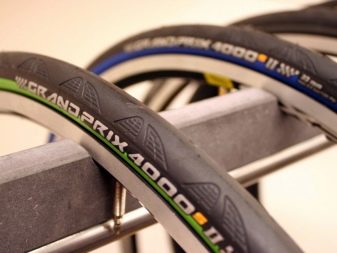
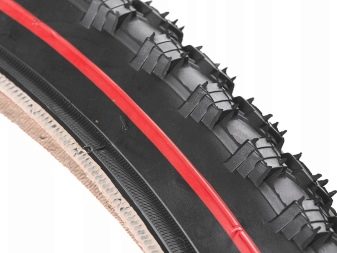
The first two tires are great for cross-country, the last - for freeride, downhill and other disciplines.
Tire strength
In the manufacture of the tire is reinforced with special threads, usually nylon. By the way, often this is indicated by the inscription on the sidewall. The more of these threads, the thinner they are, and the tire is lighter, but more expensive. This value is denoted by abbreviated as TPI.
For cross-country disciplines, the TPI must be 120 or higher. This is necessary for a good rollback and precise handling.
For downhill and enduro TPI no more than 40-60. Thanks to the thick threads, the tires are very strong, but heavy.
Not always a small TPI indicates tire strength. In cheap models there may be a little thread, but they will be thin, and the tire is still heavy.
Remember it is the tire that holds the pressure of the chamber and transfers vibrations and shock to the frame. Do not take a tire whose strength is insufficient.Saving all the same will not work, as the tire will simply break due to excessive load. And well, if not during a stunt or race.
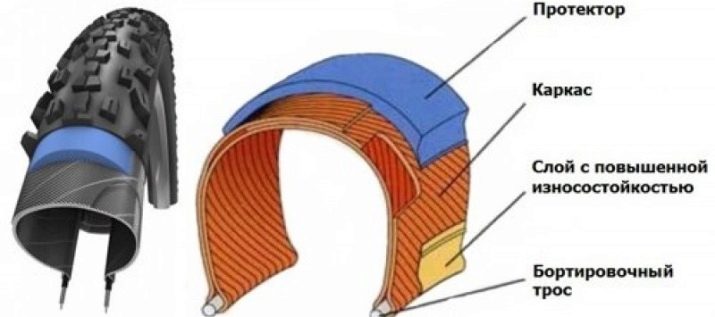
Tread stiffness
In addition to the strength of bicycle tires, tread rigidity is also standardized. The harder it is, the higher the speed and speed, but the grip is lower. Understanding the tread stiffness is easy:
- 40–45a - soft tread for downhill competitions;
- 50-60a - medium soft tread for mountain bikes;
- 60–70a - hard tread for cross-country, the probability of a puncture is minimal.
The tighter the tread, the less likely it is to damage the tire against obstacles, but the lower the comfort.
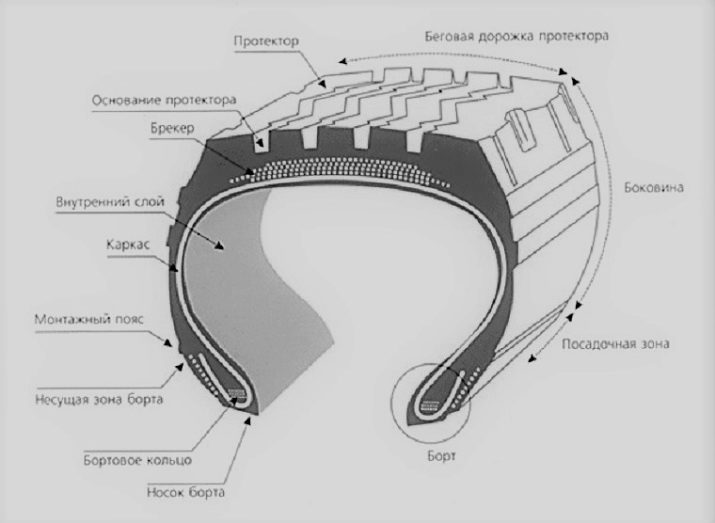
Puncture protection
Manufacturers equip some tire models with an anti-puncture layer of viscous rubber or Kevlar. In addition to protection, this layer makes the tire heavier and reduces rolling, the probability of a puncture is reduced, but still remains, especially near the sidewalls. The presence of such a layer is indicated by the inscriptions Puncture protection, Puncture resistance, Flatless, Anti-flat and others.
Sidewall structure
For different riding conditions, tires with different types of sidewalls have been created. There are 2 of these types.
- Liteskin. This is a lightweight and thin sidewall. Designed for racing or fast driving on smooth and hard roads without obstacles.
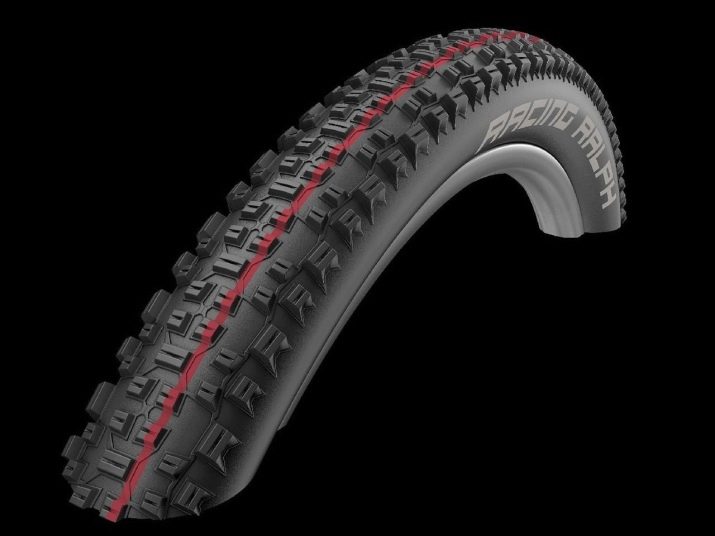
- Snakeskin A tougher and more protected sidewall for harsh environments with the ability to cut sidewalls. It can be stones or other objects.

Uses such designations Schwalbe. Others can see other names, but the essence of this does not change.
Cord device
Cord is a rigid bead which is put on a rim. It can be steel or Kevlar. Steel is heavier, but also cheaper. Kevlar is lighter, it can be folded and it improves speed performance. The difference in price between such tires reaches 2 or more times.
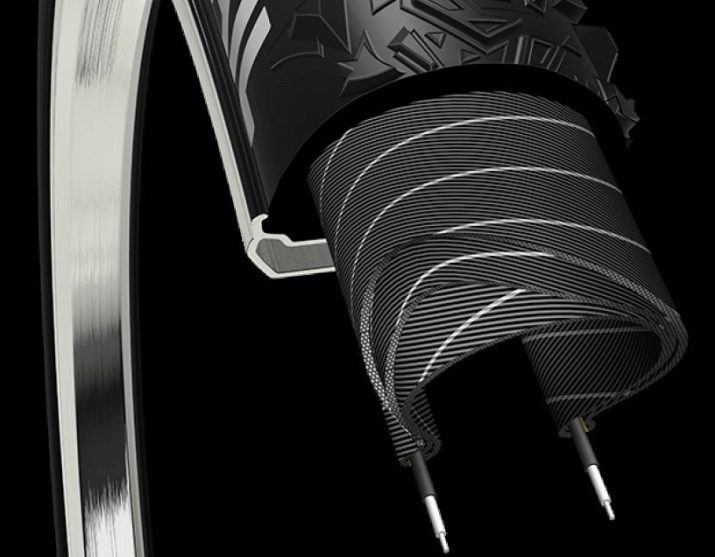
Other designations
Recommended pressure may be indicated on the tire. Usually there is an inscription Inflate to min ... max, which indicates the smallest and greatest pressure in the wheel. Units are also shown.
On the side there is usually an arrow indicating the direction of rotation. She subscribes Rotation or Drive.
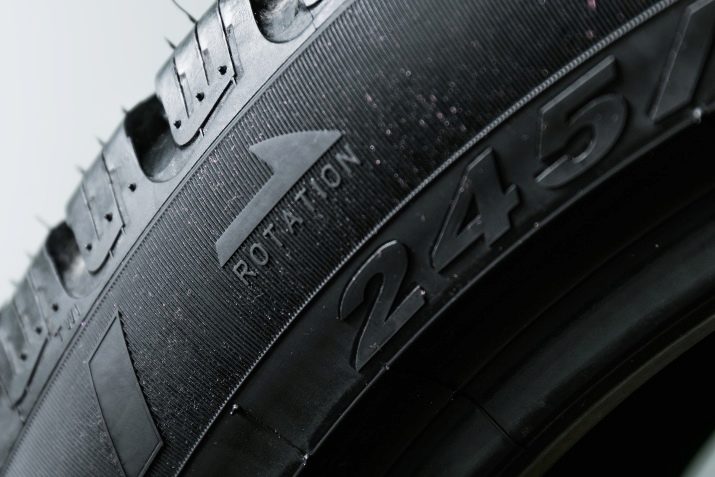
There are tires with a reflective strip. On their sidewalls there is an inscription Reflex.
Conclusion
Choosing a tire that meets all the requirements is sometimes problematic. Knowing the basic ways of marking tires will help you determine the right tire model and not waste your money. In large stores there are even cross sections of bicycle tires that clearly show their structure.
Also, a competent seller himself will offer you the right model based on operating conditions. If its labeling clearly does not correspond to the knowledge that you acquired from this article, this is already an occasion to think. Perhaps the seller is deceiving you.
See below for more information on tire sizes.
